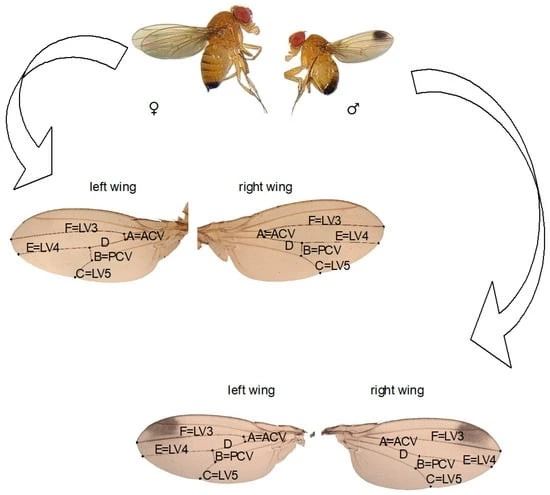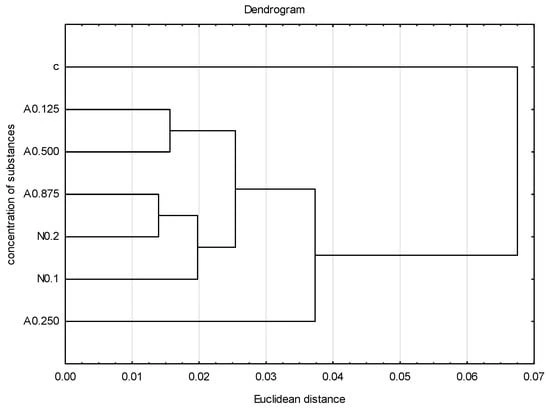Drosophila suzukii, an invasive fruit pest, causes significant damage to crops, particularly in sweet cherries, by laying eggs inside the fruit and making them unmarketable. Native to Southeast Asia, this species has rapidly spread across Europe and other parts of the world, making its control a major challenge for agriculture.
One of the strategies used to manage and reduce its proliferation is the application of insecticides, including acetamiprid, a compound in the neonicotinoid class. However, prolonged use of this active ingredient at low doses raises concerns about sublethal effects and the potential resistance that insect populations might develop.
A recent study from Poland analyzed the effects of sublethal doses of acetamiprid and nicotine on Drosophila suzukii, evaluating alterations in wing symmetry among exposed insects. The parameter used for evaluation was the "fluctuating asymmetry" (FA), an environmental stress biomarker that measures deviations from the ideal bilateral symmetry of the insect during development (developmental instability).
Fluctuating asymmetry was measured across several generations of Drosophila reared on substrates containing sublethal concentrations of acetamiprid and nicotine. The study included four different concentrations of acetamiprid and two concentrations of nicotine as a positive control.
 Image 1: Drosophila suzukii adult. Right and left wings of a male and a female; from A to F, the measured veins are marked (LV 3,4,5 = longitudinal vein 3,4,5; PCV = posterior cross vein; ACV = anterior cross vein).
Image 1: Drosophila suzukii adult. Right and left wings of a male and a female; from A to F, the measured veins are marked (LV 3,4,5 = longitudinal vein 3,4,5; PCV = posterior cross vein; ACV = anterior cross vein).
The results showed that as early as the first generation (F1), exposure to acetamiprid led to a significant increase in wing vein asymmetry and reduced fertility. Specifically, low concentrations such as 0.125 μg/mL reduced the average vein length, suggesting harmful effects even at doses below the LC50 (the lethal concentration for 50% of the population).
The effect was so pronounced that, by the fifth generation (F5), Drosophila reared at a concentration of 0.875 μg/mL did not survive. This indicates an extreme sensitivity of Drosophila suzukii to acetamiprid, with effects evident in the early generations, culminating in complete mortality within ten generations.
Regarding nicotine, used as a positive control, similar but less pronounced effects were observed compared to acetamiprid. Here, the wing veins of Drosophila exhibited a significant increase in fluctuating asymmetry, especially at higher concentrations (0.2 mg/mL). However, fluctuating asymmetry did not significantly increase across subsequent generations, suggesting that the insects did not develop resistance or adaptation to the two studied compounds.
 Image 2: Dendrogram based on five tested veins (A, B, C, E, F) showing the hierarchical relationships between groups. Groups represent different concentrations of acetamiprid (A = acetamipirid: 0.125, 0.250, 0.500, and 0.875 µg/mL), of nicotine (N = nicotine: 0.1 and 0.2 mg/mL), and the control group (c).
Image 2: Dendrogram based on five tested veins (A, B, C, E, F) showing the hierarchical relationships between groups. Groups represent different concentrations of acetamiprid (A = acetamipirid: 0.125, 0.250, 0.500, and 0.875 µg/mL), of nicotine (N = nicotine: 0.1 and 0.2 mg/mL), and the control group (c).
The study concludes that acetamiprid, although considered relatively safe for non-target organisms, has a significant sublethal impact on Drosophila suzukii, manifested through morphological alterations and reduced reproductive fitness. Fluctuating asymmetry proved to be an effective stress biomarker for evaluating the chronic effects of low-dose insecticides.
These findings underscore the importance of revisiting pest control strategies, considering not only acute toxicity but also sublethal effects that may affect the target population over multiple generations.
In conclusion, the results of the study suggest that future research should focus on optimizing insecticide application doses and exploring alternatives that are less harmful to the ecosystem while ensuring effective crop protection.
Fonte: Lewandowska-Wosik, A., & Chudzińska, E. M. (2024). Fluctuating Asymmetry Spotted Wing Drosophila (Diptera: Drosophilidae) Exposed to Sublethal Doses of Acetamiprid and Nicotine. Insects, 15(9), 681. https://doi.org/10.3390/insects15090681.
Immagini: Anetta Lewandowska-Wosik et al., 2024.
Andrea Giovannini
University of Bologna (IT)
Cherry Times - All rights reserved














